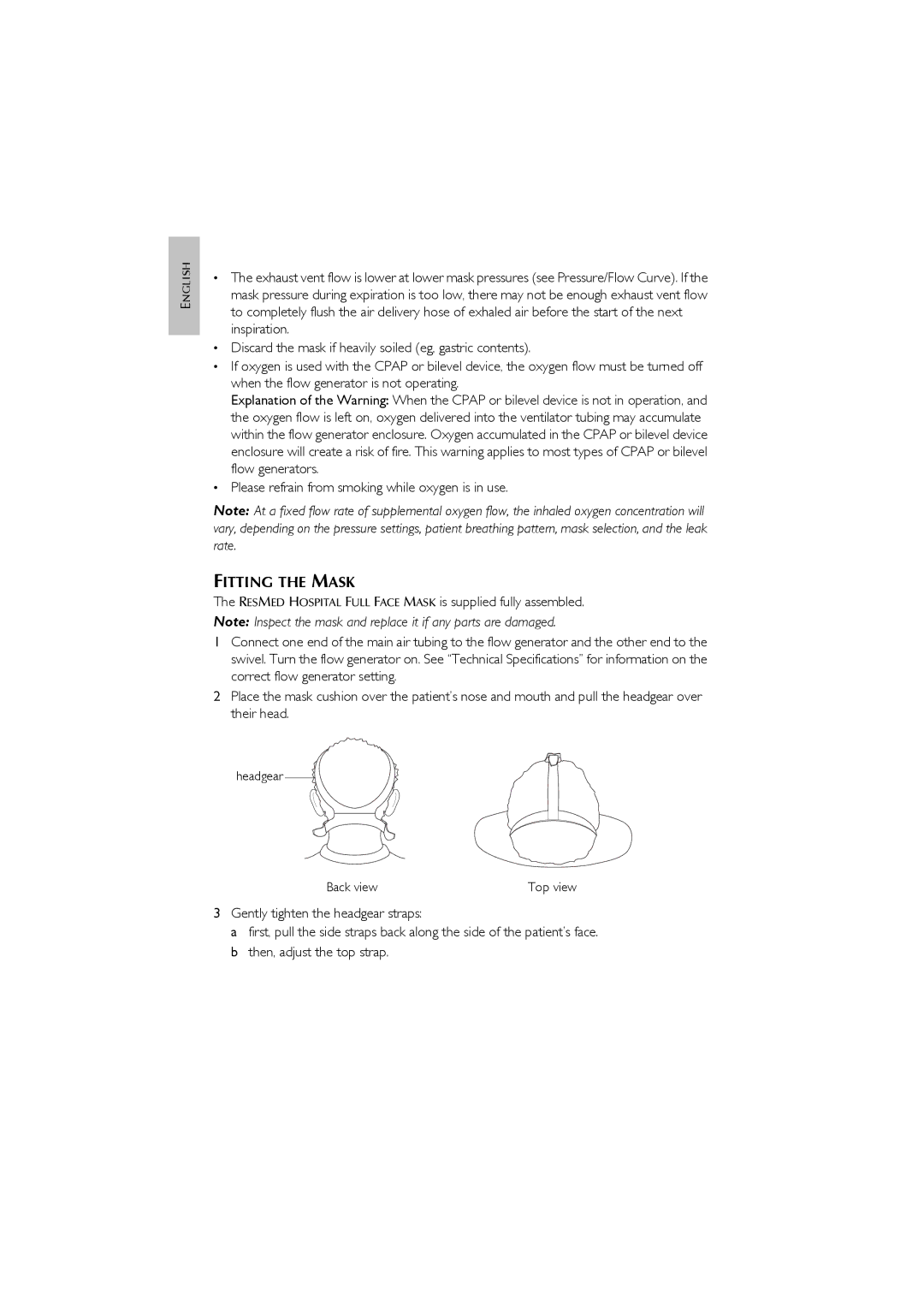
ENGLISH |
•The exhaust vent flow is lower at lower mask pressures (see Pressure/Flow Curve). If the mask pressure during expiration is too low, there may not be enough exhaust vent flow to completely flush the air delivery hose of exhaled air before the start of the next inspiration.
•Discard the mask if heavily soiled (eg, gastric contents).
•If oxygen is used with the CPAP or bilevel device, the oxygen flow must be turned off when the flow generator is not operating.
Explanation of the Warning: When the CPAP or bilevel device is not in operation, and the oxygen flow is left on, oxygen delivered into the ventilator tubing may accumulate within the flow generator enclosure. Oxygen accumulated in the CPAP or bilevel device enclosure will create a risk of fire. This warning applies to most types of CPAP or bilevel flow generators.
•Please refrain from smoking while oxygen is in use.
Note: At a fixed flow rate of supplemental oxygen flow, the inhaled oxygen concentration will vary, depending on the pressure settings, patient breathing pattern, mask selection, and the leak rate.
FITTING THE MASK
The RESMED HOSPITAL FULL FACE MASK is supplied fully assembled. Note: Inspect the mask and replace it if any parts are damaged.
1Connect one end of the main air tubing to the flow generator and the other end to the swivel. Turn the flow generator on. See “Technical Specifications” for information on the correct flow generator setting.
2Place the mask cushion over the patient’s nose and mouth and pull the headgear over their head.
headgear
Back view | Top view |
3Gently tighten the headgear straps:
a first, pull the side straps back along the side of the patient’s face. b then, adjust the top strap.
